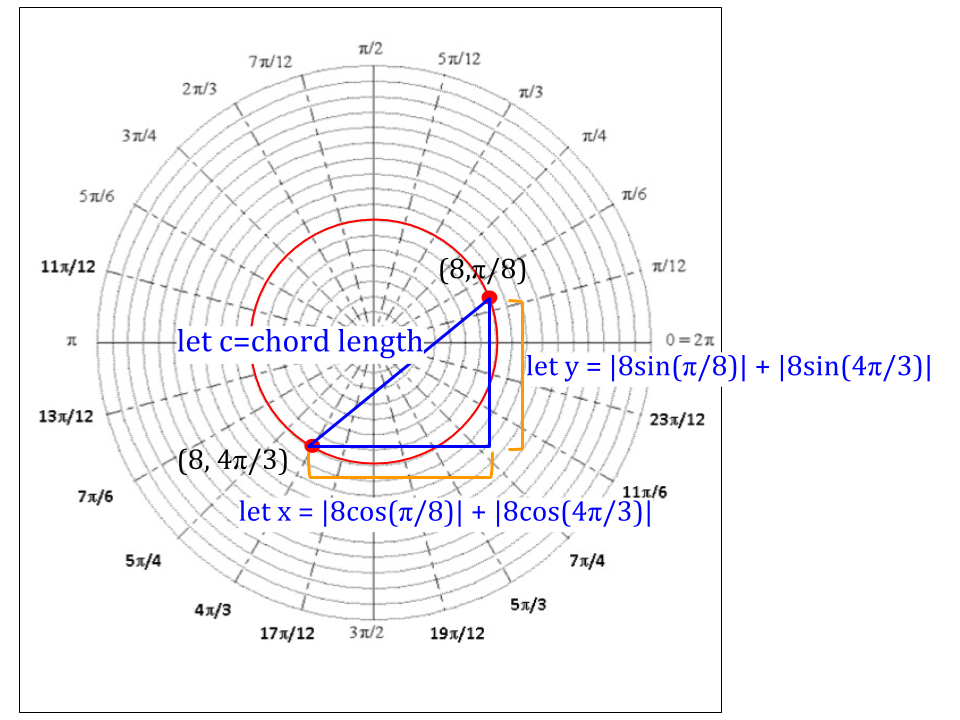A circle has a chord that goes from #( pi)/8 # to #(4 pi) / 3 # radians on the circle. If the area of the circle is #64 pi #, what is the length of the chord?
1 Answer
Explanation:
Radius:
Area
Chord length:
The first angle,

(Drawing not to scale)
To solve for chord length:
Substitute in values for x and y (shown in drawing above):
Simplify (get rid of absolute values by determining their sign)
This answer appears correct because if the radius is 8, then the diameter is 16, and this given chord is just less than 16 because it is not the diameter.

